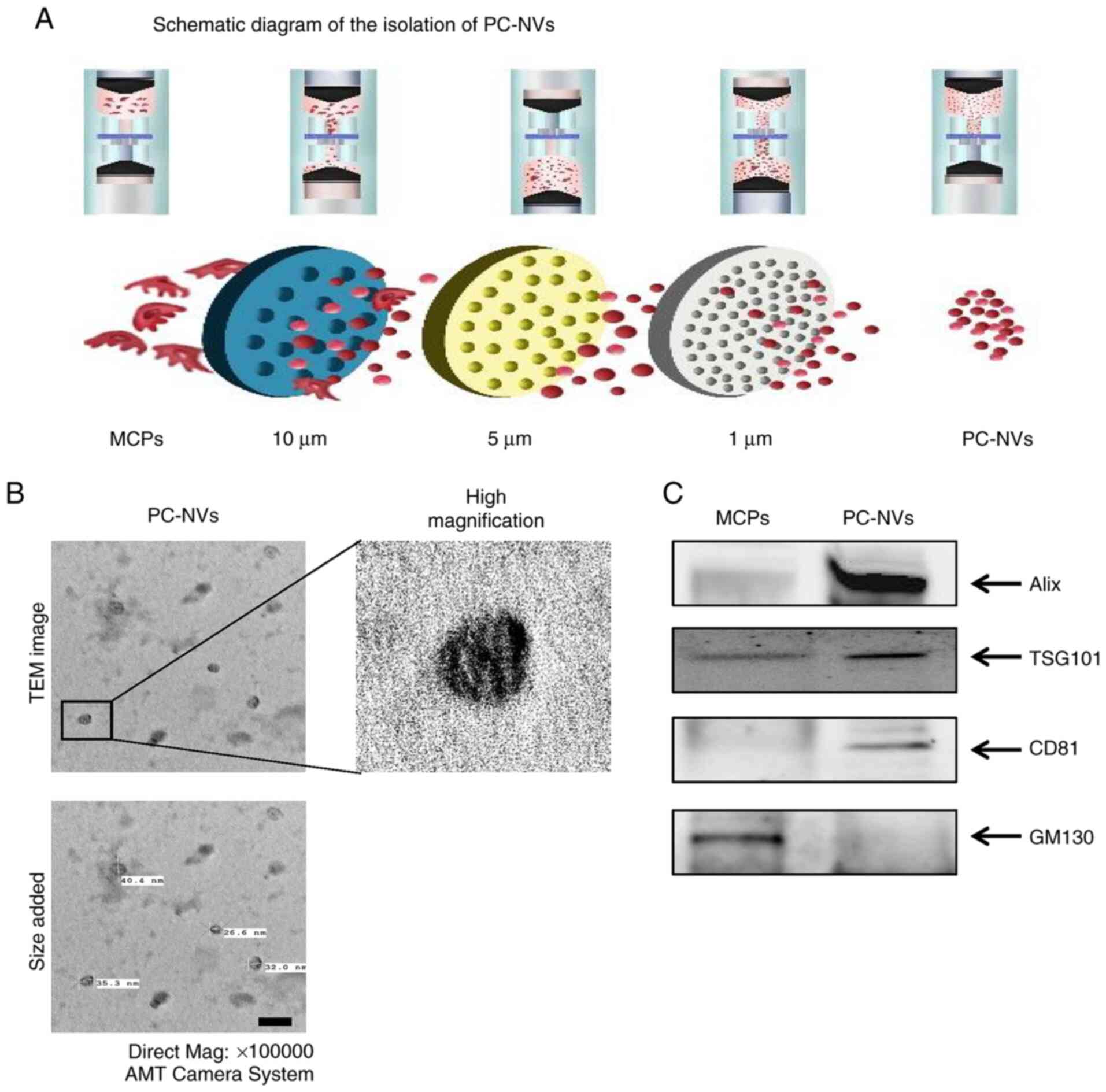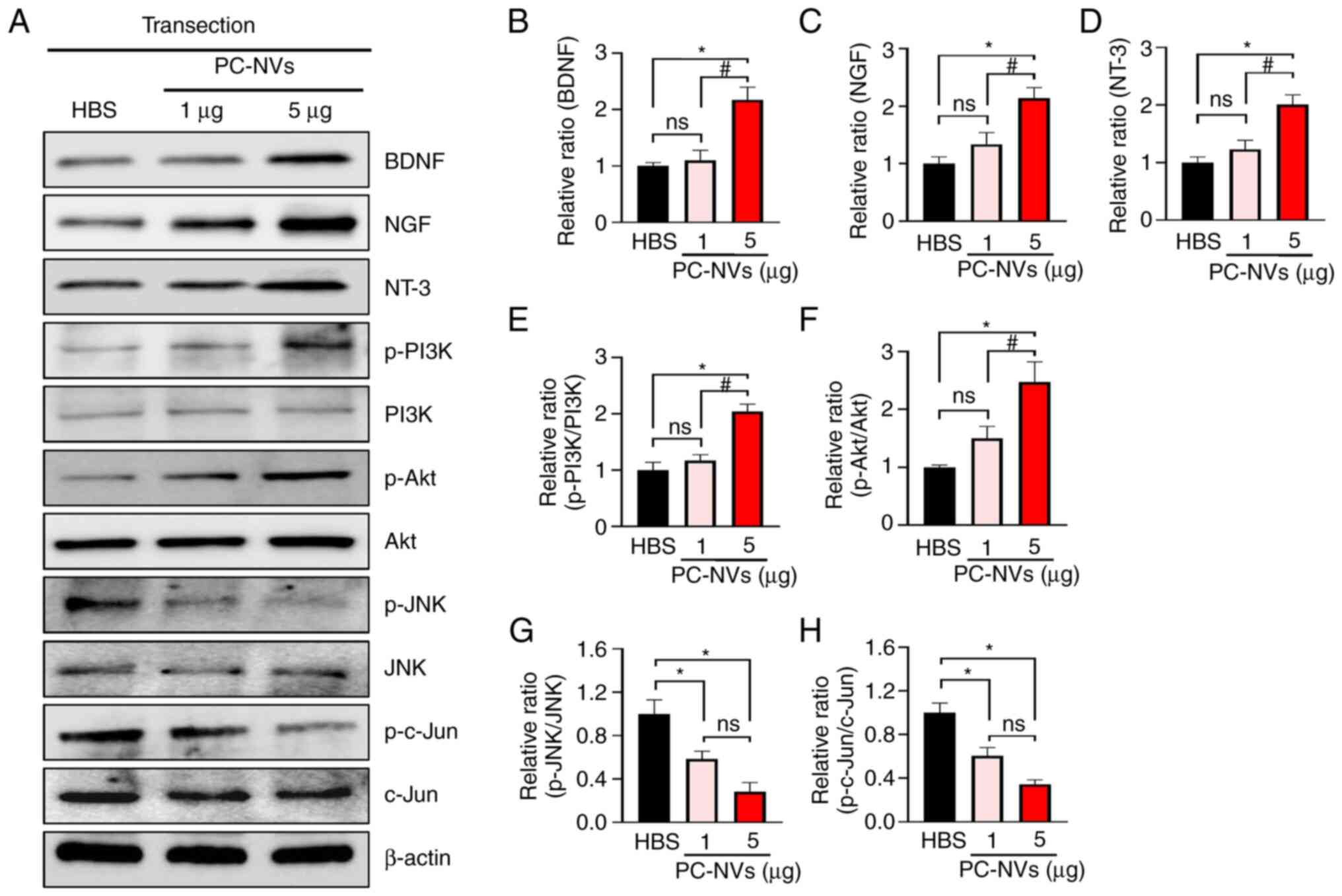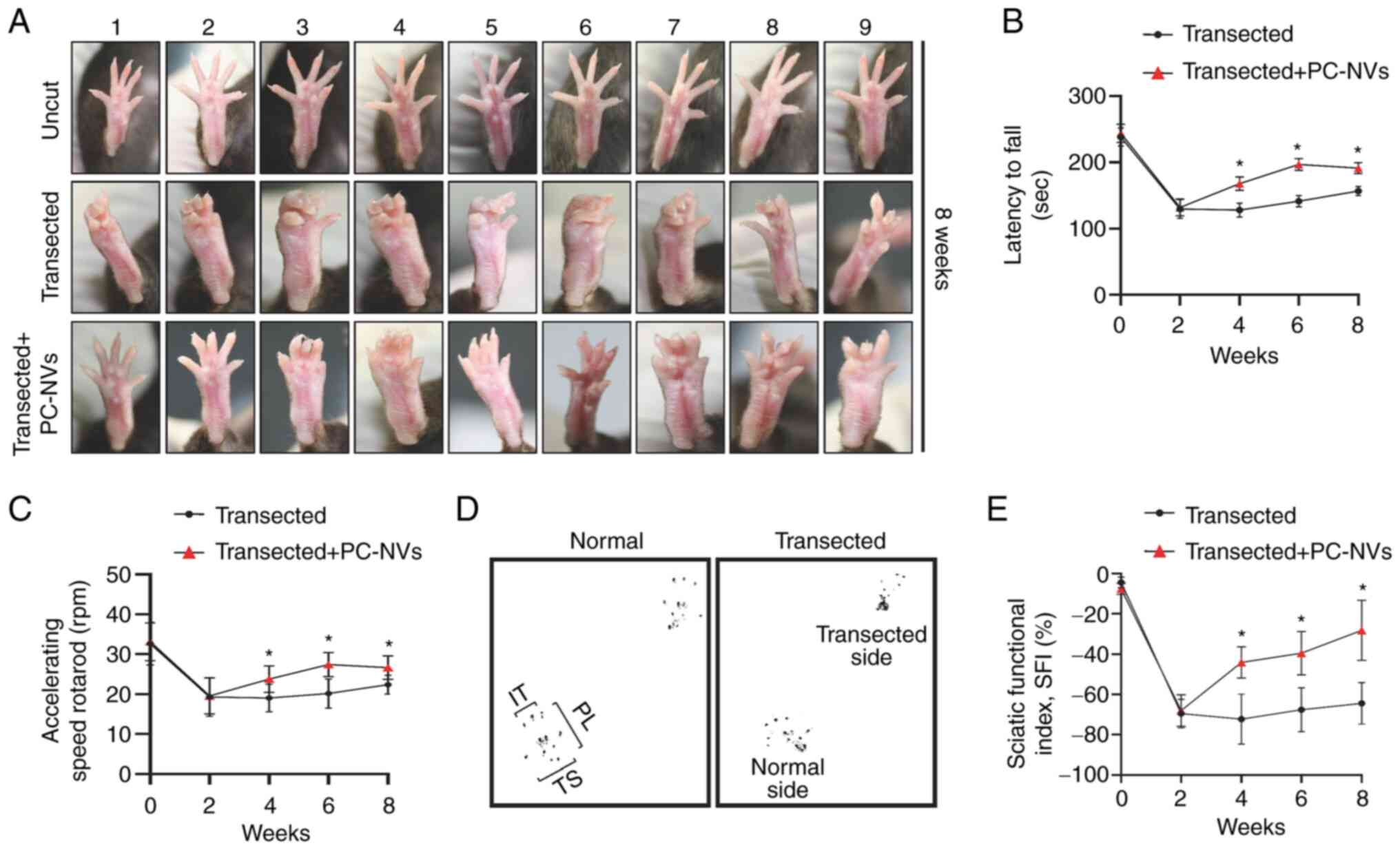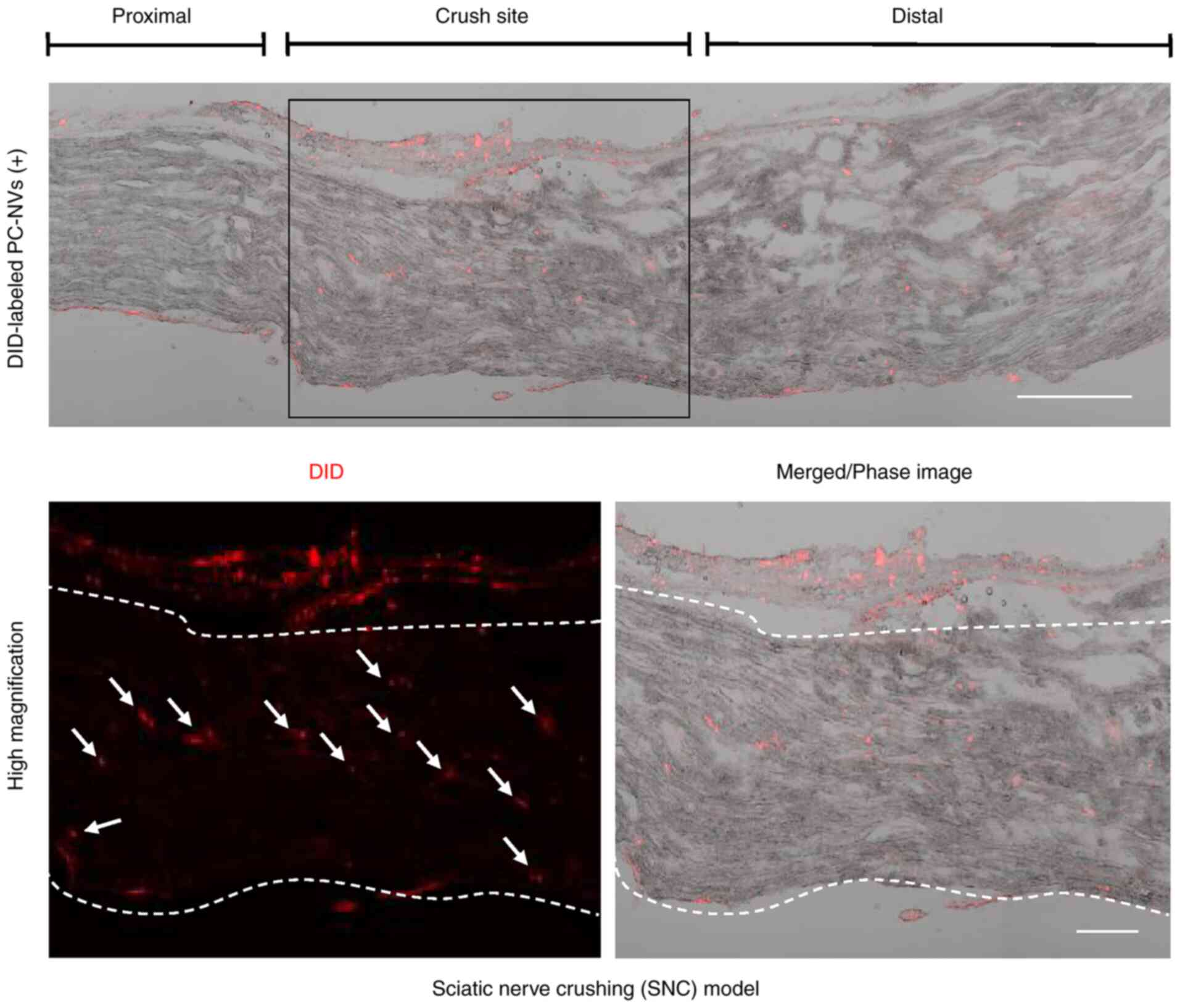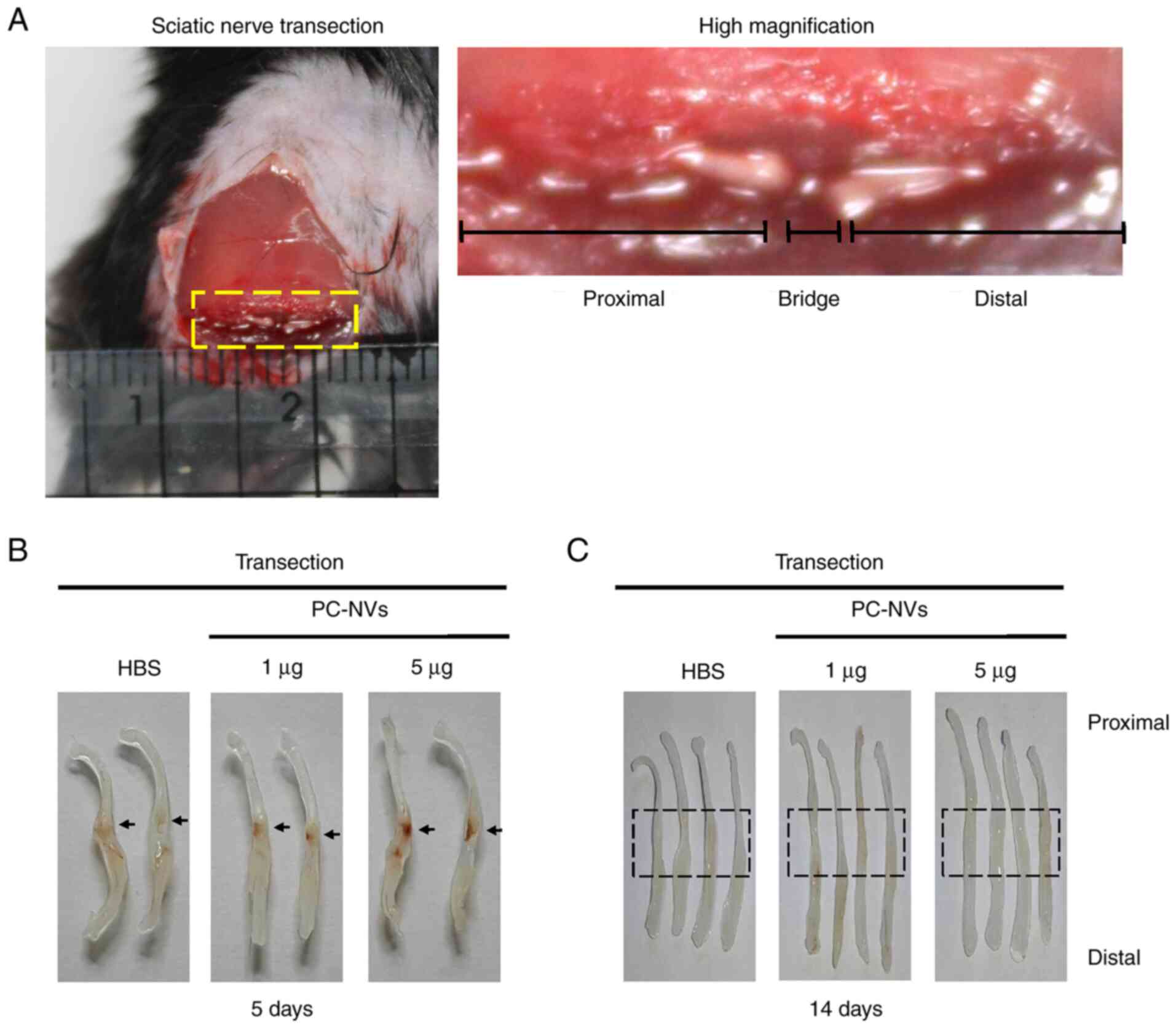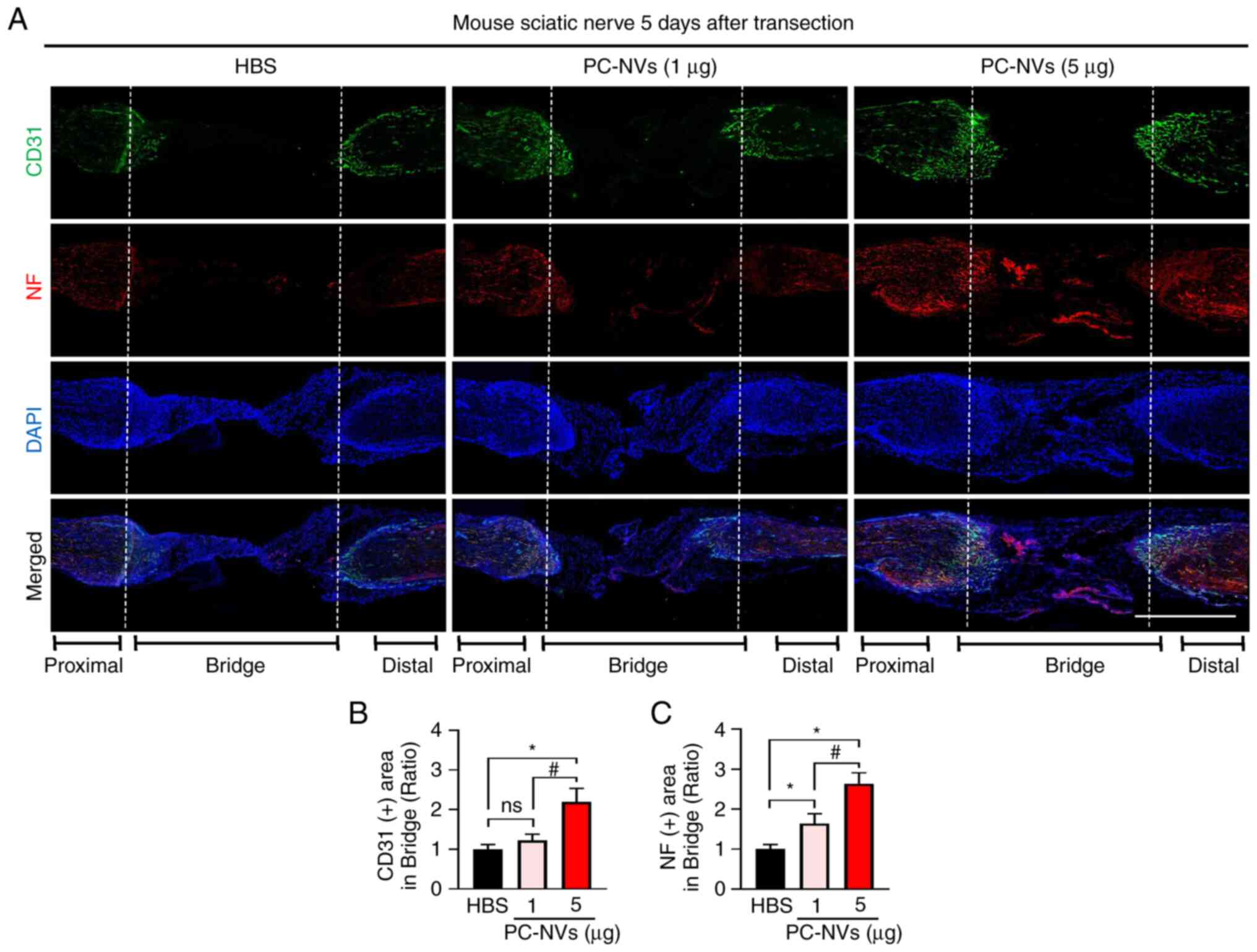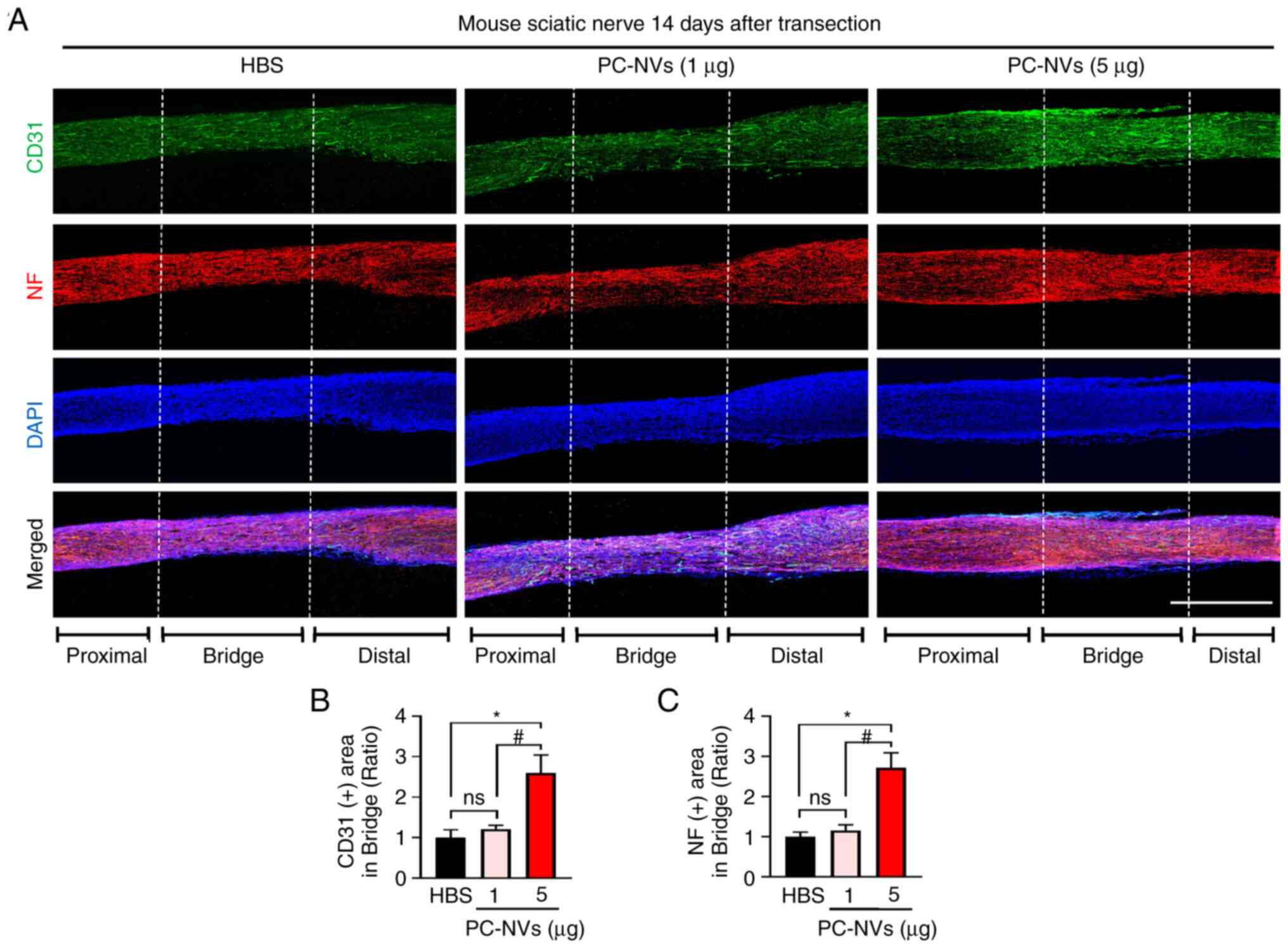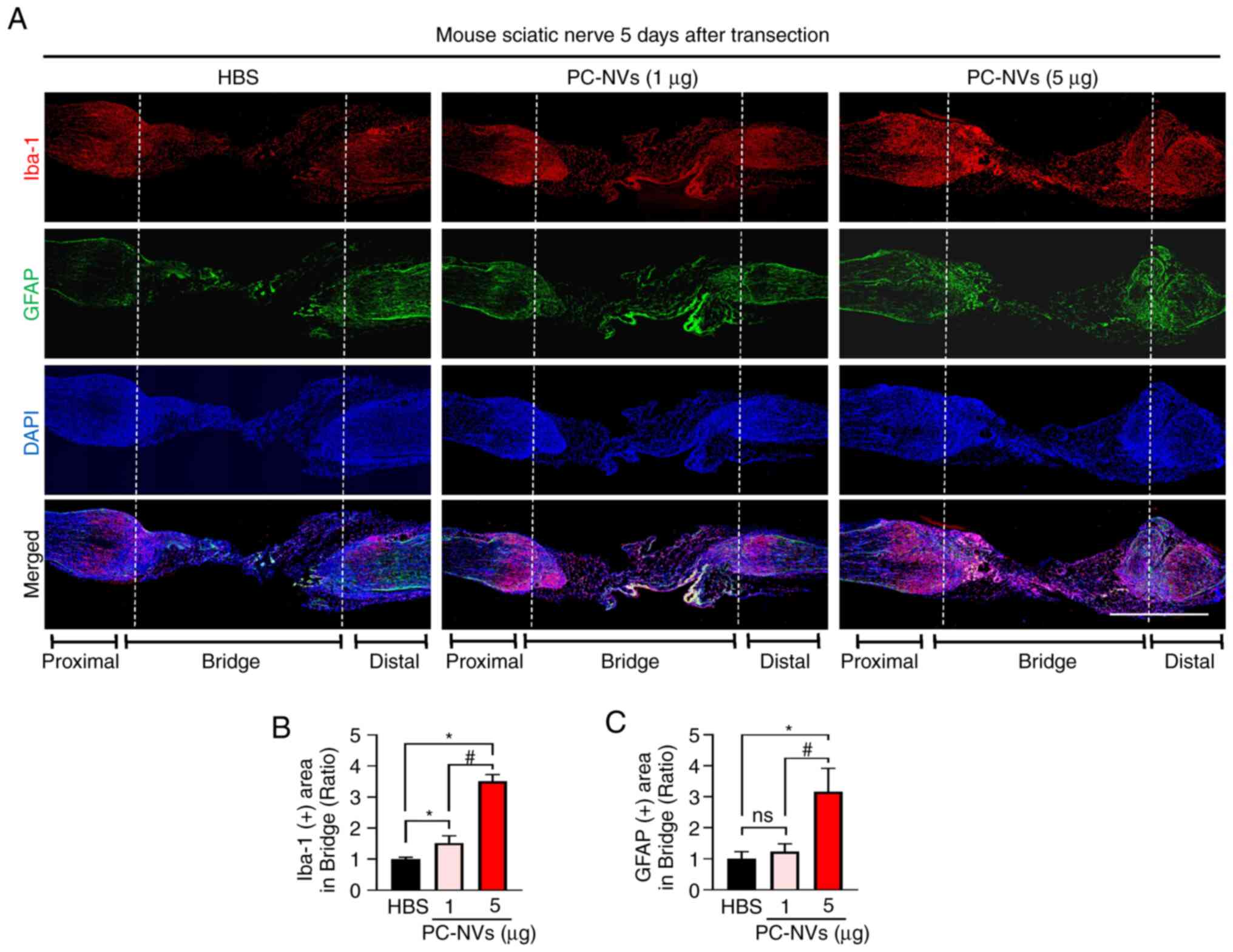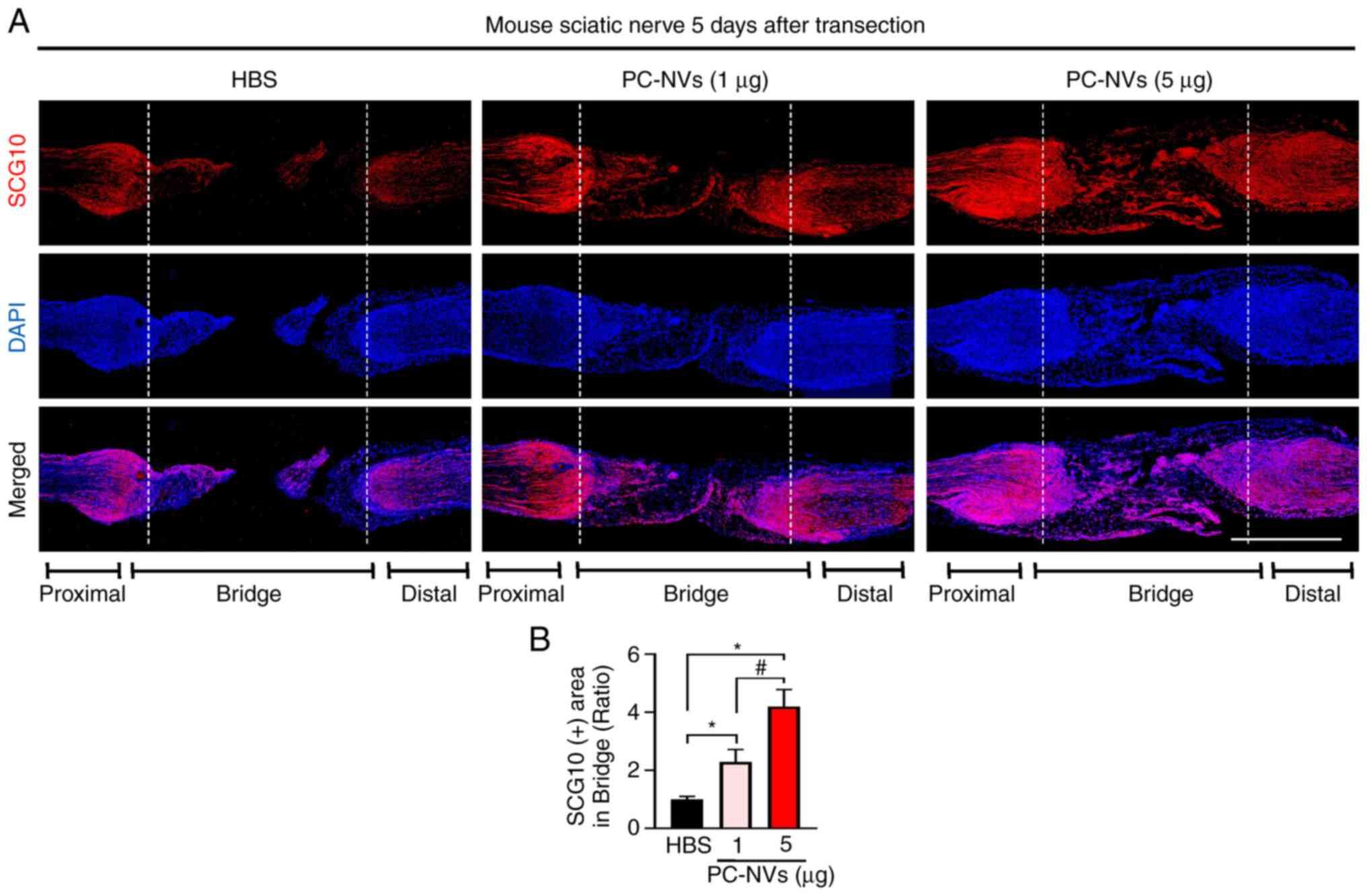|
1
|
Thomas S, Ajroud-Driss S, Dimachkie MM,
Gibbons C, Freeman R, Simpson DM, Singleton JR, Smith AG; PNRR
Study Group; Höke A: Peripheral neuropathy research registry: A
prospective cohort. J Peripher Nerv Syst. 24:39–47. 2019.
View Article : Google Scholar : PubMed/NCBI
|
|
2
|
Peters BR, Russo SA, West JM and Moore AM:
Schulz SA. Targeted muscle reinnervation for the management of pain
in the setting of major limb amputation. SAGE Open Med.
8:20503121209591802020. View Article : Google Scholar : PubMed/NCBI
|
|
3
|
Korus L, Ross DC, Doherty CD and Miller
TA: Nerve transfers and neurotization in peripheral nerve injury,
from surgery to rehabilitation. J Neurol Neurosurg Psychiatry.
87:188–197. 2016.
|
|
4
|
Hoshal SG, Solis RN and Bewley AF: Nerve
grafts in head and neck reconstruction. Curr Opin Otolaryngol Head
Neck Surg. 28:346–351. 2020. View Article : Google Scholar : PubMed/NCBI
|
|
5
|
Vijayavenkataraman S: Nerve guide conduits
for peripheral nerve injury repair: A review on design, materials
and fabrication methods. Acta Biomater. 106:54–69. 2020. View Article : Google Scholar : PubMed/NCBI
|
|
6
|
Al-Massri KF, Ahmed LA and El-Abhar HS:
Mesenchymal stem cells in chemotherapy-induced peripheral
neuropathy: A new challenging approach that requires further
investigations. J Tissue Eng Regen Med. 14:108–122. 2020.
View Article : Google Scholar
|
|
7
|
Geranmayeh MH, Rahbarghazi R and Farhoudi
M: Targeting pericytes for neurovascular regeneration. Cell Commun
Signal. 17:262019. View Article : Google Scholar : PubMed/NCBI
|
|
8
|
Tamaki T, Hirata M, Nakajima N, Saito K,
Hashimoto H, Soeda S, Uchiyama Y and Watanabe M: A long-gap
peripheral nerve injury therapy using human skeletal muscle-derived
stem cells (Sk-SCs): An achievement of significant morphological,
numerical and functional recovery. PLoS One. 11:e01666392016.
View Article : Google Scholar : PubMed/NCBI
|
|
9
|
Rivera FJ, Hinrichsen B and Silva ME:
Pericytes in multiple sclerosis. Adv Exp Med Biol. 1147:167–187.
2019. View Article : Google Scholar : PubMed/NCBI
|
|
10
|
Kisler K, Nelson AR, Rege SV, Ramanathan
A, Wang Y, Ahuja A, Lazic D, Tsai PS, Zhao Z, Zhou Y, et al:
Pericyte degeneration leads to neurovascular uncoupling and limits
oxygen supply to brain. Nat Neurosci. 20:406–416. 2017. View Article : Google Scholar : PubMed/NCBI
|
|
11
|
Yin GN, Jin HR, Choi MJ, Limanjaya A,
Ghatak K, Minh NN, Ock J, Kwon M, Song KM, Park HJ, et al:
Pericyte-derived Dickkopf2 regenerates damaged penile
neurovasculature through an angiopoietin-1-Tie2 pathway. Diabetes.
67:1149–1161. 2018. View Article : Google Scholar : PubMed/NCBI
|
|
12
|
Li C, Qin F, Hu F, Xu H, Sun G, Han G,
Wang T and Guo M: Characterization and selective incorporation of
small non-coding RNAs in non-small cell lung cancer extracellular
vesicles. Cell Biosci. 8:22018. View Article : Google Scholar : PubMed/NCBI
|
|
13
|
O'Brien K, Breyne K, Ughetto S, Laurent LC
and Breakefield XO: RNA delivery by extracellular vesicles in
mammalian cells and its applications. Nat Rev Mol Cell Biol.
21:585–606. 2020. View Article : Google Scholar : PubMed/NCBI
|
|
14
|
Mäe MA, He L, Nordling S, Vazquez-Liebanas
E, Nahar K, Jung B, Li X, Tan BC, Foo JC, Cazenave-Gassiot A, et
al: Single-cell analysis of blood-brain barrier response to
pericyte loss. Circ Res. 128:e46–e62. 2021. View Article : Google Scholar
|
|
15
|
Liu Y and Holmes C: Tissue regeneration
capacity of extracellular vesicles isolated from bone
marrow-derived and adipose-derived mesenchymal stromal/stem cells.
Front Cell Dev Biol. 9:6480982021. View Article : Google Scholar : PubMed/NCBI
|
|
16
|
Kim OY, Lee J and Gho YS: Extracellular
vesicle mimetics: Novel alternatives to extracellular vesicle-based
theranostics, drug delivery, and vaccines. Semin Cell Dev Biol.
67:74–82. 2017. View Article : Google Scholar
|
|
17
|
Kwon MH, Song KM, Limanjaya A, Choi MJ,
Ghatak K, Nguyen NM, Ock J, Yin GN, Kang JH, Lee MR, et al:
Embryonic stem cell-derived extracellular vesicle-mimetic
nanovesicles rescue erectile function by enhancing penile
neurovascular regeneration in the streptozotocin-induced diabetic
mouse. Sci Rep. 9:200722019. View Article : Google Scholar : PubMed/NCBI
|
|
18
|
Yin GN, Park SH, Ock J, Choi MJ, Limanjaya
A, Ghatak K, Song KM, Kwon MH, Kim DK, Gho YS, et al:
Pericyte-derived extracellular vesicle-mimetic nanovesicles restore
erectile function by enhancing neurovascular regeneration in a
mouse model of cavernous nerve injury. J Sex Med. 17:2118–2128.
2020. View Article : Google Scholar : PubMed/NCBI
|
|
19
|
Cattin AL, Burden JJ, Van Emmenis L,
Mackenzie FE, Hoving JJA, Calavia NG, Guo Y, McLaughlin M,
Rosenberg LH, Quereda V, et al: Macrophage-induced blood vessels
guide schwann cell-mediated regeneration of peripheral nerves.
Cell. 162:1127–1139. 2015. View Article : Google Scholar : PubMed/NCBI
|
|
20
|
Yin GN, Park SH, Song KM, Limanjaya A,
Ghatak K, Minh NN, Ock J, Ryu JK and Suh JK: Establishment of in
vitro model of erectile dysfunction for the study of
high-glucose-induced angiopathy and neuropathy. Andrology.
5:327–335. 2017. View Article : Google Scholar
|
|
21
|
Meng FW, Jing XN, Song GH, Jie LL and Shen
FF: Prox1 induces new lymphatic vessel formation and promotes nerve
reconstruction in a mouse model of sciatic nerve crush injury. J
Anat. 237:933–940. 2020. View Article : Google Scholar : PubMed/NCBI
|
|
22
|
Chen B, Carr L and Dun XP: Dynamic
expression of Slit1-3 and Robo1-2 in the mouse peripheral nervous
system after injury. Neural Regen Res. 15:948–958. 2020. View Article : Google Scholar
|
|
23
|
Lim EF, Nakanishi ST, Hoghooghi V, Eaton
SE, Palmer AL, Frederick A, Stratton JA, Stykel MG, Whelan PJ,
Zochodne DW, et al: AlphaB-crystallin regulates remyelination after
peripheral nerve injury. Proc Natl Acad Sci USA. 114:E1707–E1716.
2017. View Article : Google Scholar : PubMed/NCBI
|
|
24
|
Lee JI, Hur JM, You J and Lee DH:
Functional recovery with histomorphometric analysis of nerves and
muscles after combination treatment with erythropoietin and
dexamethasone in acute peripheral nerve injury. PLoS One.
15:e02382082020. View Article : Google Scholar : PubMed/NCBI
|
|
25
|
Kaka G, Arum J, Sadraie SH, Emamgholi A
and Mohammadi A: Bone marrow stromal cells associated with poly
L-Lactic-Co-Glycolic acid (PLGA) nanofiber scaffold improve
transected sciatic nerve regeneration. Iran J Biotechnol.
15:149–156. 2017. View Article : Google Scholar
|
|
26
|
Moldovan M, Pinchenko V, Dmytriyeva O,
Pankratova S, Fugleholm K, Klingelhofer J, Bock E, Berezin V,
Krarup C and Kiryushko D: Peptide mimetic of the S100A4 protein
modulates peripheral nerve regeneration and attenuates the
progression of neuropathy in myelin protein P0 null mice. Mol Med.
19:43–53. 2013. View Article : Google Scholar : PubMed/NCBI
|
|
27
|
Stratton JA, Holmes A, Rosin NL, Sinha S,
Vohra M, Burma NE, Trang T, Midha R and Biernaskie J: Macrophages
regulate schwann cell maturation after nerve injury. Cell Rep.
24:2561–2572.e6. 2018. View Article : Google Scholar : PubMed/NCBI
|
|
28
|
Kim KJ and Namgung U: Facilitating effects
of Buyang Huanwu decoction on axonal regeneration after peripheral
nerve transection. J Ethnopharmacol. 213:56–64. 2018. View Article : Google Scholar
|
|
29
|
Li R, Li DH, Zhang HY, Wang J, Li XK and
Xiao J: Growth factors-based therapeutic strategies and their
underlying signaling mechanisms for peripheral nerve regeneration.
Acta Pharmacol Sin. 41:1289–1300. 2020. View Article : Google Scholar : PubMed/NCBI
|
|
30
|
El Seblani N, Welleford AS, Quintero JE,
van Horne CG and Gerhardt GA: Invited review: Utilizing peripheral
nerve regenerative elements to repair damage in the CNS. J Neurosci
Methods. 335:1086232020. View Article : Google Scholar : PubMed/NCBI
|
|
31
|
Kuffler DP and Foy C: Restoration of
neurological function following peripheral nerve trauma. Int J Mol
Sci. 21:18082020. View Article : Google Scholar :
|
|
32
|
Alsmadi NZ, Bendale GS, Kanneganti A,
Shihabeddin T, Nguyen AH, Hor E, Dash S, Johnston B, Granja-Vazquez
R and Romero-Ortega MI: Glial-derived growth factor and
pleiotrophin synergistically promote axonal regeneration in
critical nerve injuries. Acta Biomater. 78:165–177. 2018.
View Article : Google Scholar : PubMed/NCBI
|
|
33
|
Sweeney M and Foldes G: It takes two:
Endothelial-perivascular cell cross-talk in vascular development
and disease. Front Cardiovasc Med. 5:1542018. View Article : Google Scholar : PubMed/NCBI
|
|
34
|
Wang H, Zhu H, Guo Q, Qian T, Zhang P, Li
S, Xue C and Gu X: Overlapping mechanisms of peripheral nerve
regeneration and angiogenesis following sciatic nerve transection.
Front Cell Neurosci. 11:3232017. View Article : Google Scholar : PubMed/NCBI
|
|
35
|
Chen G, Luo X and Wang W, Wang Y, Zhu F
and Wang W: Interleukin-1β promotes schwann cells
de-differentiation in wallerian degeneration via the c-JUN/AP-1
pathway. Front Cell Neurosci. 13:3042019. View Article : Google Scholar
|
|
36
|
Rhode SC, Beier JP and Ruhl T: Adipose
tissue stem cells in peripheral nerve regeneration-in vitro and in
vivo. J Neurosci Res. 99:545–560. 2021. View Article : Google Scholar
|
|
37
|
Manning BD and Toker A: AKT/PKB signaling:
Navigating the network. Cell. 169:381–405. 2017. View Article : Google Scholar : PubMed/NCBI
|















